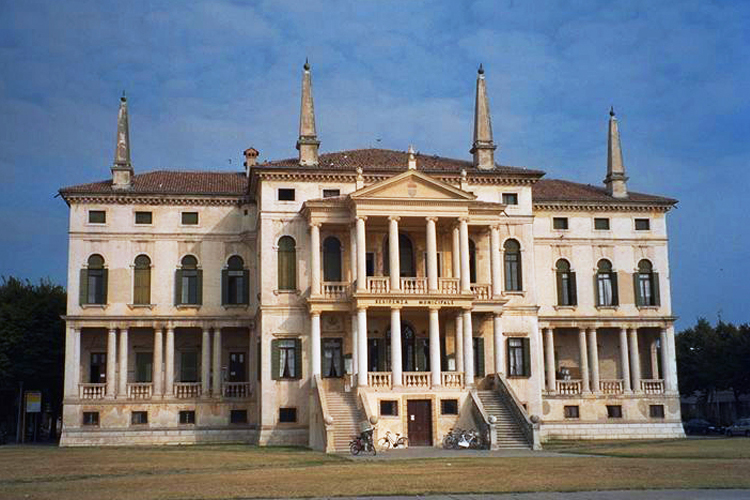Villa Barbarigo
in Noventa Vicentina
Villa Barbarigo definitely distinguishes itself among all the villas built in the outskirts of Vicenza for the Venetian patricians, since it was built for a family of doges who loyally served the Serenissima during the centuries. This is why it gained the title of “Doge’s Villa” (a definition that in the past was improperly given to all the venetian villas). In this villa everything cooperates in the glorification of the Barbarigo family: the majesty of the architecture developed on four floors, the spectacular and solemn façade crowned by daggers and flanked with two wings of porticos, the wide cycle of frescoes that covers an area of approximately 430 sqm.

In Noventa since 1497, the Barbarigo family entrusted a “mastro Venturin muraro” in 1588 with the task of building a villa with two essential requirements: the quest for profit through agricultural activity (see the wide “agrarian square” surrounded by a colonnade) and the glorification of the “gens“. In fact, the Barbarigo family had progressively invested their money in the purchase of estates in Noventa and were in close relations with the representatives of the local community. The villa thus became a center of agricultural activity, symbol of the prestige and economic fortunes of its owners, and at the same time a urban core around which Noventa progressively expanded during the centuries.
However, the title of “Doge’s Villa” is mostly due to the frescoes made by artists such as Antonio Foler, Antonio Vassillacchi known as L’Aliense and Luca Ferrari da Reggio. While, in fact, the seventeenth- century paintings on the second floor are characterised by intimist tones and by a more evident literary style, those in the first floor – destined for public hearings and then more formal – represent the deeds of the most glorious members of the family such as the two Doges Marco and Agostino.
They succeeded one another in the Doge’s throne (a unique case in the whole history of Venice) – the first from November of 1485, the second from August of 1486. However, they ruled in very different ways, since also their personalities were unlike each other. This is why in the room dedicated to Marco – peaceful and tolerant –the portrait of the doge is flanked by the Allegories of Peace, Abundance, Obedience, Prudence and True Wisdom, while the Allegories of Glory, Fortune and War painted in the room dedicated to Agostino emphasises his soldierly, intransigent and authoritarian character, that is also underlined by his portrait by Antonio Vassillacchi known as L’ Aliense.

